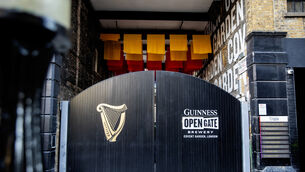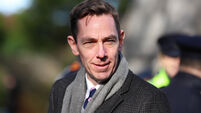Meet George Hamilton: The voice of Ireland

Since at George Hamilton’s suggestion, we’re having a most convivial lunch in the private members’ Ulster Reform Club in his native Belfast – an old world choice of interview location which requires your correspondent to step out of his sartorial comfort zone and into a jacket, shirt and tie – it seems only fair that I try to get my retaliation in by mischievously putting the cross-border broadcaster on the spot.
“So, George,” I say, “it’s Northern Ireland v the Republic of Ireland at the Euros: where does your allegiance lie?”
















